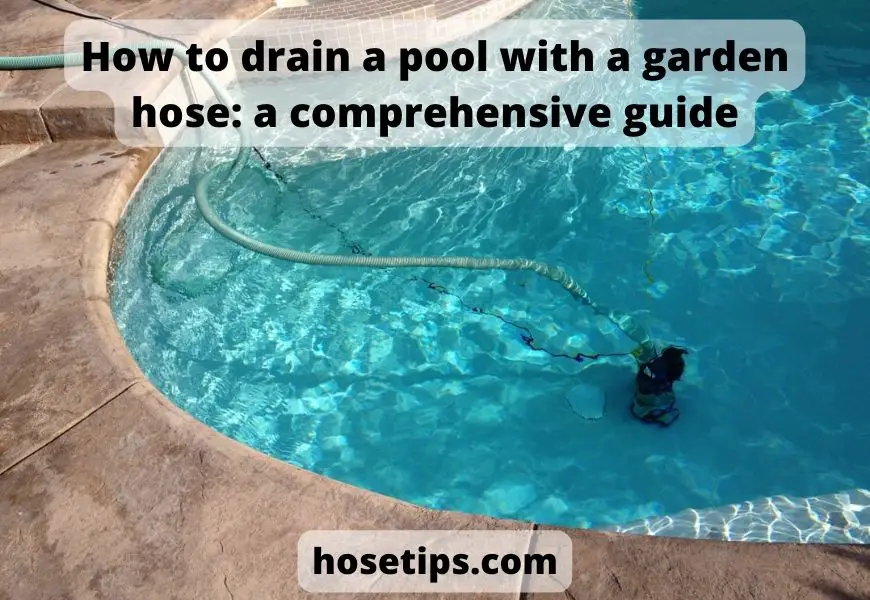How to drain a pool with a garden hose? Draining your pool is an essential task for anyone who owns a pool, whether it’s an above-ground pool or an inground pool.
This article proposes your step-by-step guide on how to drain water from pool with hose.
Why do you need to drain your pool?
Knowing why you need to drain an above-ground or inground pool empowers pool owners to make more informed choices.
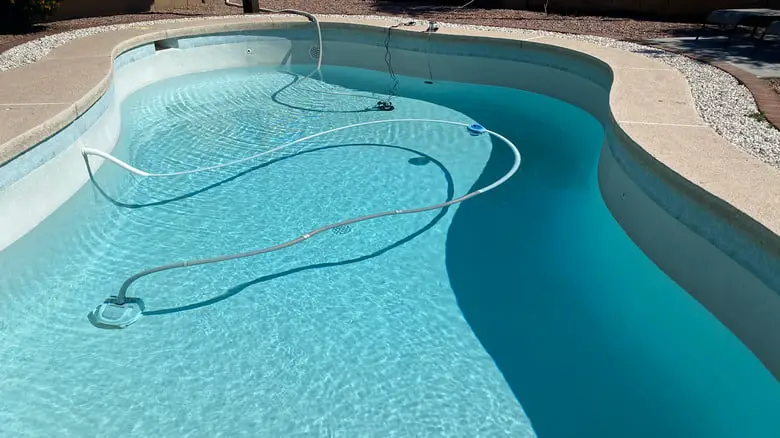
Over time, pool water can become contaminated, affecting the water chemistry. Refreshing the pool by emptying and refilling it improve the cleanliness and safety of the water.
Reasons to drain your pool
Over time, pool gear might necessitate some maintenance. For pool repairs, particularly those beneath the water surface like checking the pool liner or mending a faulty pump, emptying the pool is frequently necessary.
Draining also allows you to replace contaminated water with fresh water, ensuring a healthier swimming environment. Sometimes, pool chemicals like chlorine locks can become unbalanced. Draining and refilling can help reset the water chemistry. For example, regulating the correct pH values is crucial for preserving your pool’s prime condition.
Preparing your pool for winter also involves draining to protect against freezing temperatures.
Understanding various pool types
Different types of pools, such as above-ground pools, inflatable pools, and inground pools, have unique draining challenges and techniques.
Pre-draining steps for an above-ground pool
Before beginning to drain an above-ground swimming pool, switch off the pool pump and have a sump pump on hand. Ensure easy access to the drain valve and steer clear of emptying straight into storm drains to prevent chemical contamination.
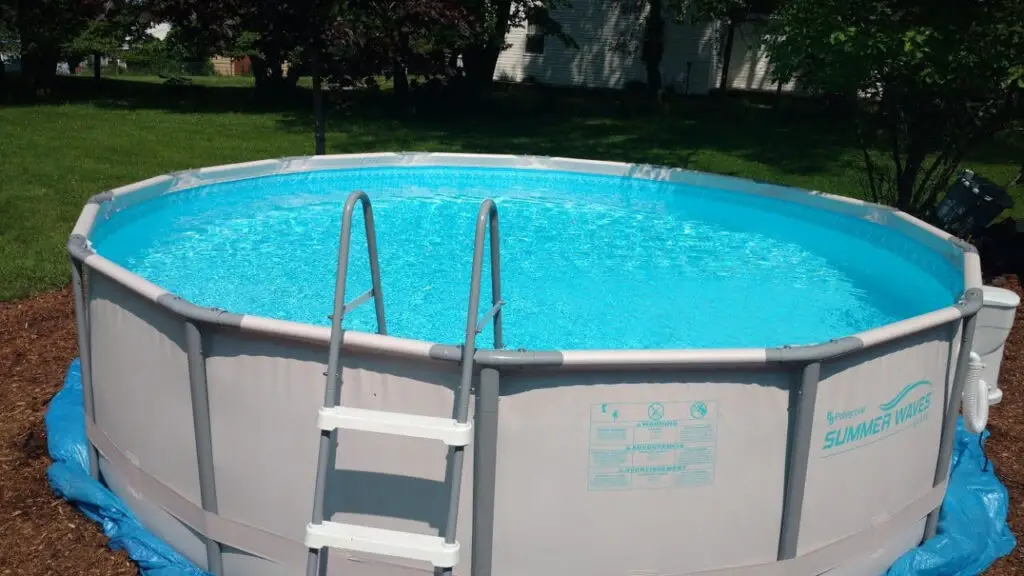
Also, it’s crucial not to completely drain an above-ground pool to avoid damage.
Draining a mini inflatable pool using a garden hose
For smaller pools, the garden hose siphon method works well. Immerse the entire hose fully in the pool water, ensuring no air bubbles are present. Quickly pull one end out and place it lower than the pool water level to initiate siphoning.
Draining in an inground pool
Unlike an above-ground pool, inground pools usually have integrated drainage systems built during construction. These are designed for effective and convenient water removal when needed.
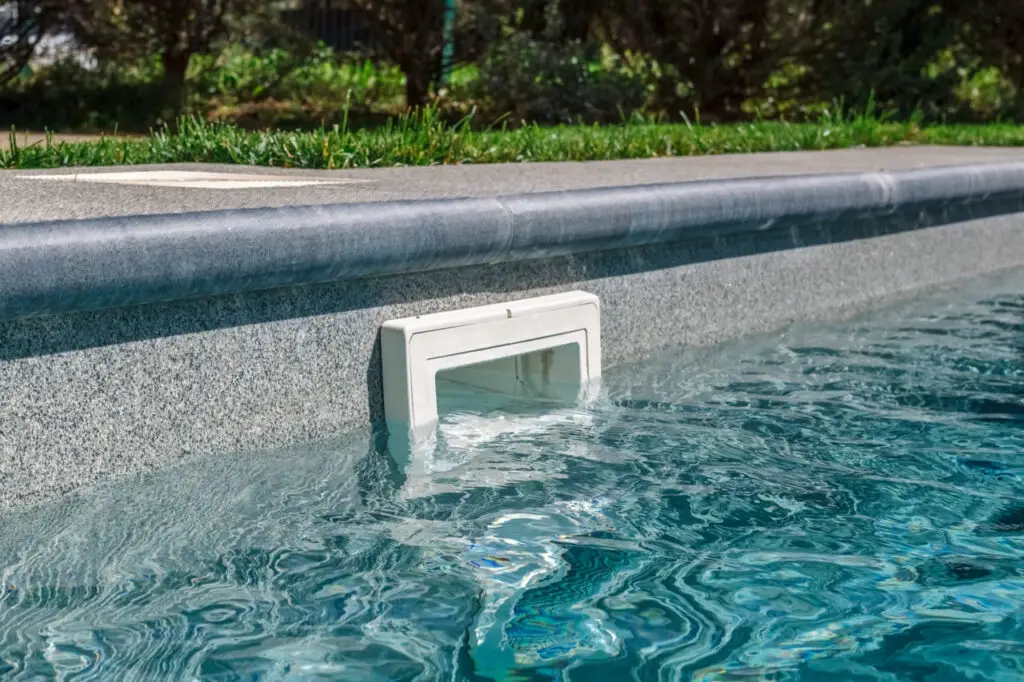
However, there might be situations where using the built-in system is not feasible or desirable. In such cases, you can choose to use a hose to drain your inground pool.
If you’re unfamiliar with this approach, you’ll discover that the process closely resembles the manual suction method used for an above-ground swimming pool, leveraging the siphoning effect to direct water to a suitable drainage location.
The basics of draining using a garden hose
Knowing how to drain a pool using hose water is invaluable for anyone who owns a pool. This method is not only cost-effective but also has the benefit of being straightforward to execute.
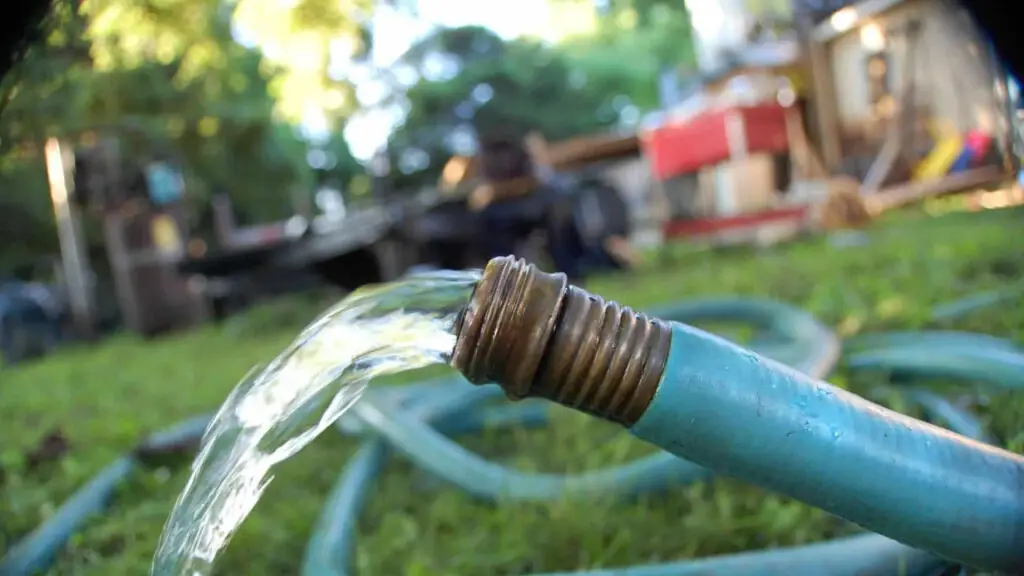
Siphoning water with a hose
When drawing water out of an in-ground pool, adhere to the following steps:
- Submerge the hose. Immerse the entire hose fully in the pool to fill it and remove air bubbles.
- Set up for drainage. Quickly remove one end of the hose and position it lower than the pool’s water level.
- Lead to drainage spot. Position the hose end in an appropriate drainage spot.
- Allow gravity to do its job. Water flow will start automatically due to the elevation difference between the pool and the drainage area.
Creating a siphon using a spigot
Setting up a siphon using a hose and a spigot is an efficient method to drain your pool. Here’s the procedure:
- Connect to the spigot. Attach one end of the garden hose to an outdoor faucet, making sure it’s securely fastened to prevent leaks.
- Fill the Hose. Turn on the faucet to fill the hose with water, a crucial step for initiating the siphon.
- Position the hose. After filling the hose, turn off the faucet and quickly disconnect it. Place the free end at your designated drainage spot, ensuring it’s lower than the pool’s water level.
- Initiate the siphon. Once the hose is filled and correctly positioned, the siphon effect will naturally begin, drawing water from the pool to the drainage spot.
- Monitor. Keep an eye on the water movement to ensure it remains steady until you’ve drained the desired amount of water.
Draining a pool without using a pump
Draining a pool without using a pump may seem challenging, but the right approach makes it feasible. Many opt for the immersion method, using a hose combined with a siphon tube. Let’s delve into it:
- Preparation. Before beginning the process, gather all the necessary tools. The length of the hose should be sufficient to reach your designated drainage spot.
- Submerge. Immerse the hose and siphon tube fully in the pool to fill them with water.
- Eliminate air pockets. As you submerge the entire hose, be vigilant to ensure that no air pockets remain trapped inside. Air pockets can disrupt the siphoning process.
- Position for draining. Quickly remove one end of the hose and place it in your drainage area.
- Initiate the siphon. The siphon will naturally start due to the difference in water levels.
- Monitor the process. Watch the water movement and adjust the hose as needed until you reach the desired water level.
Draining water level with two hoses
Draining a large pool can be time-consuming, especially if you’re using just one hose. To speed up the process, you can use two garden hoses instead of one.
Here’s how to go about it:
- Preparation. Make sure both hoses are in good condition, without any leaks or kinks, to ensure efficient draining.
- Connection. Attach one end of each hose to the pool’s drainage outlet. If your pool has only one outlet, you may need a splitter to connect both hoses.
- Placement. Place the other ends of the hoses in the direction of a storm drain.
- Check Local Regulations. Before you start draining, it’s crucial to be aware of any local or municipal regulations regarding draining water into storm drains.
- Start Draining. Once everything is set up and you’ve confirmed that you comply with local regulations, you can start the draining process.
- Monitor. Keep an eye on the process to ensure that the hoses are working as they should and that the water is flowing into the storm drain. Make adjustments as necessary.
- Completion: Once the pool is drained, remove the hoses and close the drainage outlets.
Advanced pool-draining techniques
To drain an above-ground pool, sometimes the basic methods might not be sufficient, especially if you’re dealing with a larger pool or if you’re in a hurry.
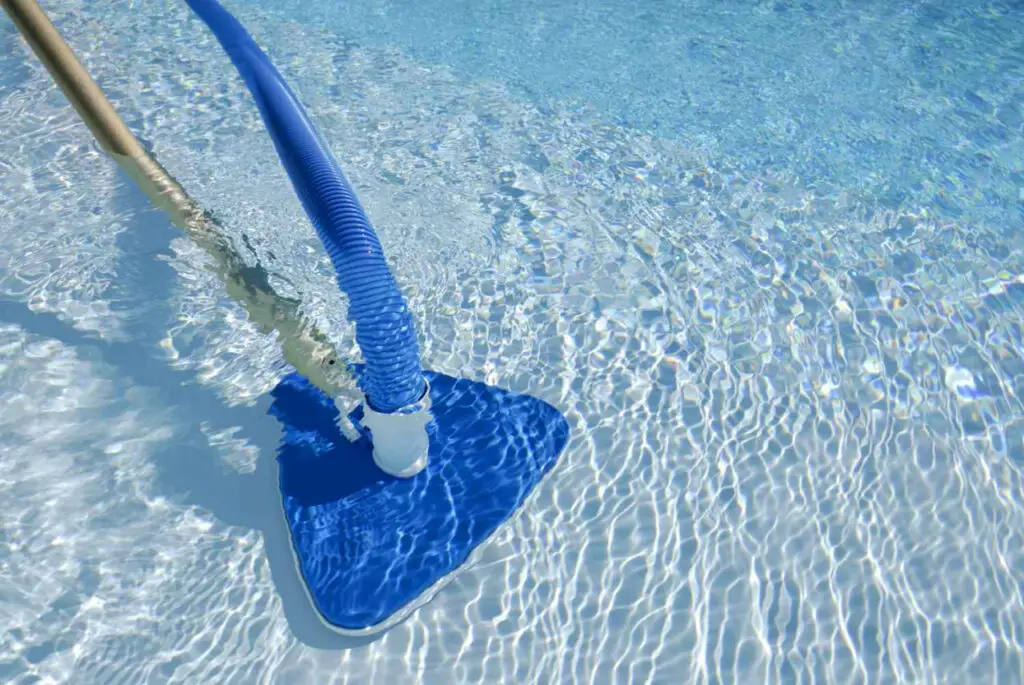
Advanced draining techniques often involve specialized equipment and tools that can offer a more efficient solution in such scenarios.
Using a drain adapter to drain an above-ground pool
For more challenging draining scenarios, such as a larger pool or when you’re in a hurry, advanced techniques involving specialized equipment like a drain adapter or a sump pump can be more efficient.
Simply attach the adapter to the drain plug and connect your hose. Open the valve, and the pool will start draining
Using a sump pump
Place a sump pump, also referred to as a utility pump or a submersible pump, on the pool floor and connect the outlet hose to the pump and the intake hose to a drainage location. Turn on the pump to quickly drain the pool.
Ensure the water is directed away from storm drains to comply with local regulations.
Special circumstances for draining
Draining a pool is not always a straightforward task. Depending on the specific needs and conditions of your pool, there might be special circumstances that require additional considerations and precautions.
Structural repairs necessitate draining
For structural repairs, it’s essential to completely drain an above-ground pool. This means you’ll need to drain all the remaining water from your pool.

Once drained, ensuring the pool liner is well-protected from potential damage is crucial.
Additionally, before commencing any repair work, ensure that any remaining water on the pool floor has been dried up.
To add fresh water
As time passes, contaminants can accumulate in your pool water, affecting both its clarity and safety. When these levels become too high, it may become necessary to drain your pool and refill it with fresh water. This action not only enhances the overall condition of your pool but also ensures a safer and more enjoyable swimming experience avoiding pool repairs.
For a pool chemistry update
Maintaining the right balance of chemicals is essential for the health and safety of those using the pool. Sometimes, despite adding chemicals, the water chemistry may still be off. In such cases, draining and refilling your pool can serve as a reset button, helping to restore balanced water chemistry.
This is particularly useful when dealing with stubborn imbalances that don’t respond to regular adjustments of chemicals like chlorine or pH levels.
Preparing your pool for winter storage
As the colder months approach, it’s crucial to prepare your pool for winter storage to prevent any potential damage. One key aspect of this preparation involves lowering the water level below the skimmer line. This step is vital as it helps to reduce the risks associated with water expansion when it freezes.
Maintenance and care
Proper and regular maintenance is the cornerstone of a long-lasting swimming pool and garden hose. Here are some tips for maintaining these essential items.
How to maintain a garden hose?
It’s advisable to regularly inspect your garden hose for any signs of wear or leaks. A well-maintained hose not only lasts longer but also performs better.
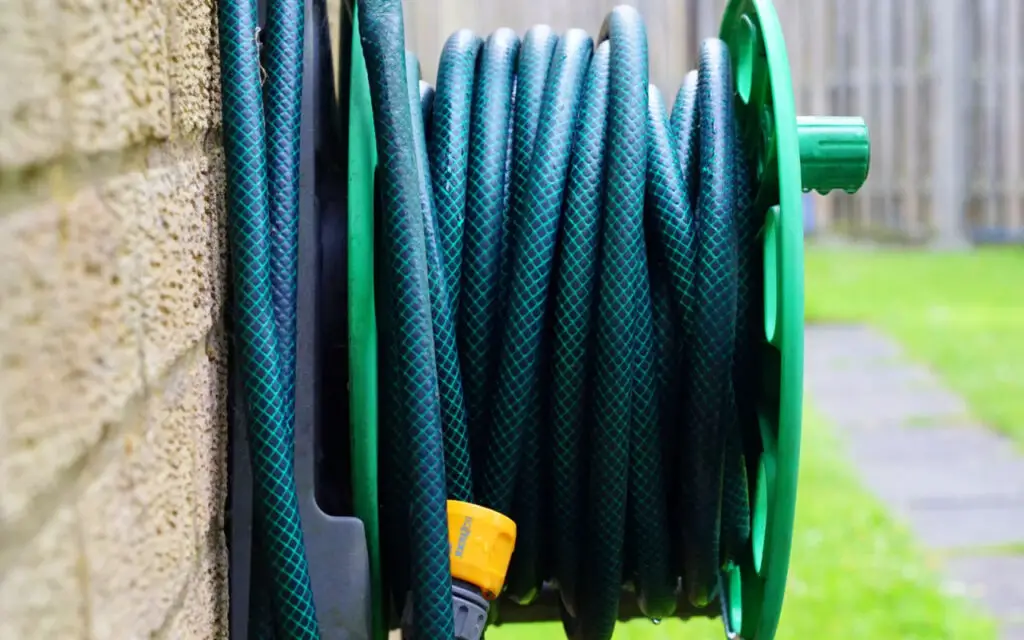
To extend its lifespan, always coil your hose neatly and store it in a place shielded from direct sunlight and extreme temperatures.
Tips to maintain your swimming pool
Regular pool maintenance includes checking pool chemicals, cleaning the pool equipment, and ensuring the pool liner is free from damage.
Pros and cons of garden hose draining
Using a garden hose for full pool drainage is a common approach, but it has its advantages and disadvantages.
Advantages and disadvantages of a garden hose to drain your pool
Advantages:
- Cost-effective. No need for an expensive pool pump or a sump pump.
- Simple. No technical knowledge is required.
Disadvantages:
- Slower. Draining with a garden hose takes longer than using a sump pump or a pool pump.
- Limited by pool water level difference. Siphoning requires a difference in pool water levels.
FAQ
The time it takes to drain a pool using a garden hose largely depends on the size and depth of the pool. For smaller pools, it might only take several hours. However, for larger pools or those with significant depth, the process can extend to a couple of days. Factors like the diameter of the hose, water pressure, and any obstructions in the hose can also influence the draining speed.
Draining an inground pool with a hose can be achieved in a couple of ways:
Siphon Method. This method involves submerging a hose into the pool, filling it with water, and then positioning one end at a lower elevation to create a siphoning effect. The difference in water levels will naturally draw the water out.
Submersible Pump. If you have access to a submersible pump, you can connect it to a hose. Place the pump at the bottom of the pool and direct the hose to a drainage area. Turn on the pump, and it will efficiently remove the water.
If you’re in a hurry and need to drain your pool faster than traditional methods allow, consider the following:
Sump Pump. A sump pump can remove water much faster than a simple hose. It’s especially effective for larger pools or when you need to empty the pool.
Multiple garden hoses. Using more than one hose can also expedite the process. Creating multiple exit points for the water increases the overall flow rate.
Depending on your pool type, whether it is an above-ground pool or an inground one, use a hose, sump pump, or built-in drainage system.
Conclusion
Draining your pool doesn’t have to be a daunting task. With the right tools and methods, you can efficiently drain your pool for repairs, maintenance, or water replacement. Whether you have an above-ground pool or an inground pool, a garden hose can be invaluable for this task. Regular pool maintenance makes tasks like this and even hot tub care easy.

